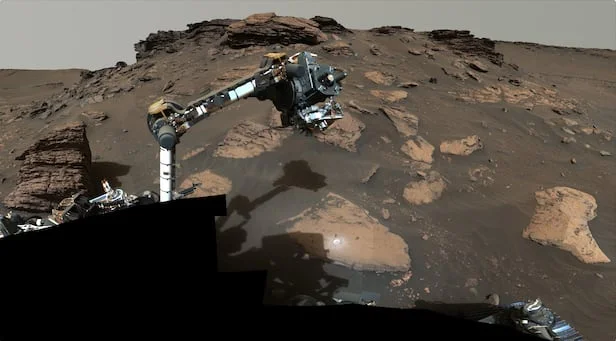
Martian Streaks: Dry Avalanches, Not Water, Shape the Red Planet
For decades, the enigmatic dark streaks adorning the slopes of Mars have intrigued planetary scientists. Were they evidence of flowing water, hinting at potentially habitable environments? A groundbreaking new study published in Nature Communications suggests a different story: dry avalanches sculpted by wind and dust, not liquid water, are the primary drivers behind these Martian features.

The research, led by planetary scientists at Brown University and the University of Bern, utilized machine learning to analyze a massive dataset of over 500,000 slope streaks. This comprehensive approach allowed them to identify correlations between streak formation and various environmental factors, ultimately favoring a dry, dust-driven explanation.
Adomas Valantinas, a postdoctoral researcher at Brown and co-author of the study, explains, "A big focus of Mars research is understanding modern-day processes...including the possibility of liquid water on the surface. Our study reviewed these features but found no evidence of water. Our model favors dry formation processes."
The streaks, first observed in the 1970s by NASA's Viking mission, have long been a subject of debate. Some scientists believed they could be formed by small amounts of water mixing with salts during warmer periods, creating habitable niches. However, this new research challenges that view.
Valentin Bickel from the University of Bern, emphasized the study's methodology: "Once we had this global map, we could compare it to databases and catalogs of other things like temperature, wind speed, hydration, rock slide activity and other factors. Then we could look for correlations over hundreds of thousands of cases to better understand the conditions under which these features form."
The geostatistical analysis revealed that slope streaks and recurring slope lineae (RSLs) are more likely to be found in areas with above-average wind speed and dust deposition, rather than factors associated with liquid water or frost. This suggests that the streaks are formed when layers of fine dust suddenly slide off steep slopes.
The triggers for these avalanches may vary. Slope streaks are more common near recent impact craters, where shockwaves could dislodge dust. RSLs, on the other hand, are more often found in areas with frequent dust devils or rockfalls.
This finding has significant implications for future Mars exploration. If slope streaks are indeed dry phenomena, the risk of contaminating potentially habitable Martian environments with Earth-based microbes is reduced.
"That's the advantage of this big data approach," Valantinas stated. "It helps us to rule out some hypotheses from orbit before we send spacecraft to explore."
While this study strongly suggests a dry origin for Martian streaks, further research is always crucial. Understanding the specific triggers and dynamics of dust avalanches on Mars will provide valuable insights into the planet's climate system and geological processes.
What do you think about this new research? Does it settle the debate about Martian streaks for good? Leave your comments and share your thoughts below!